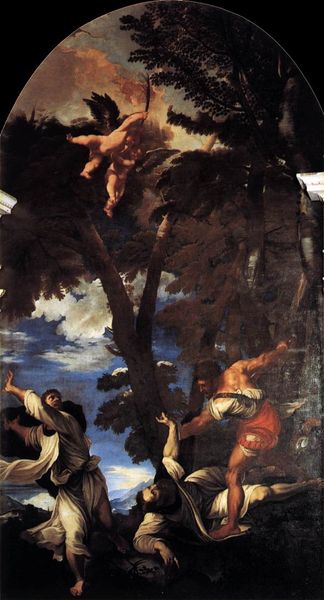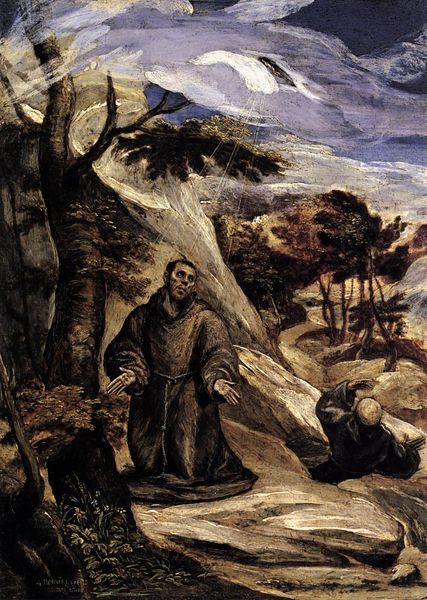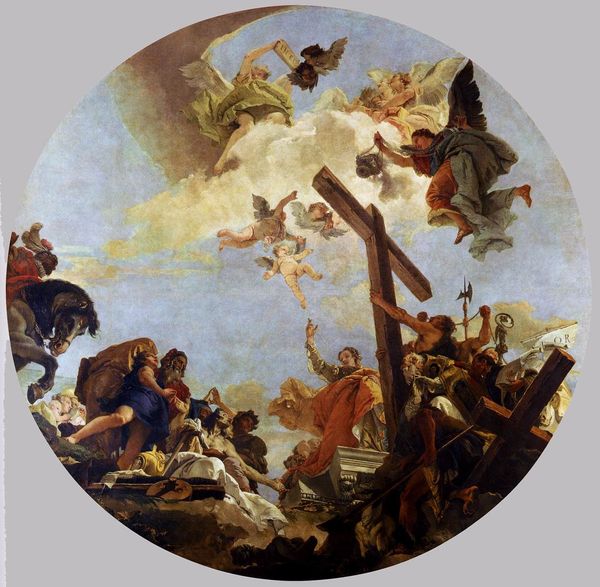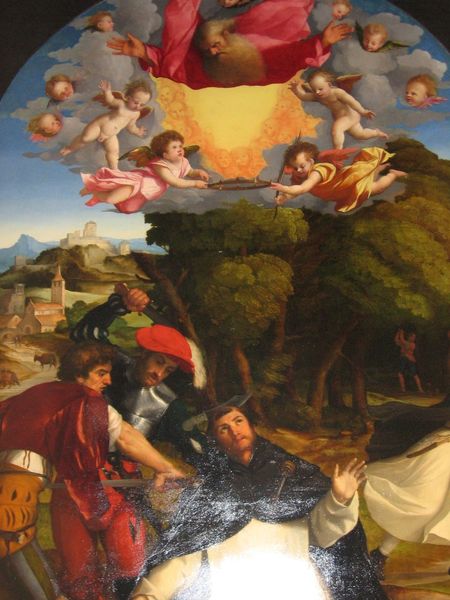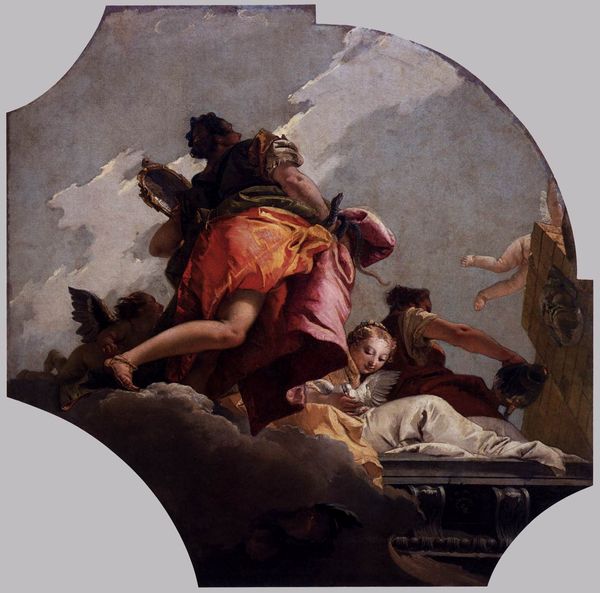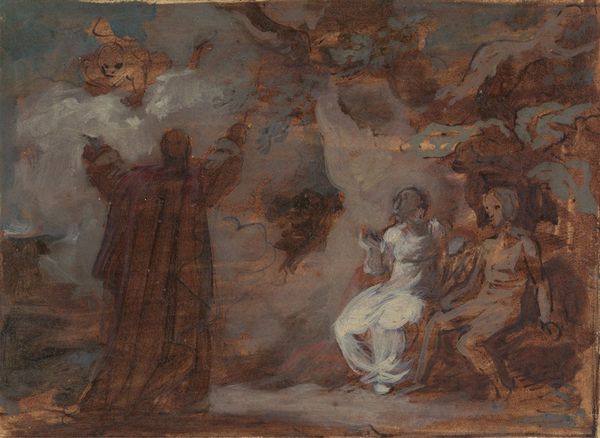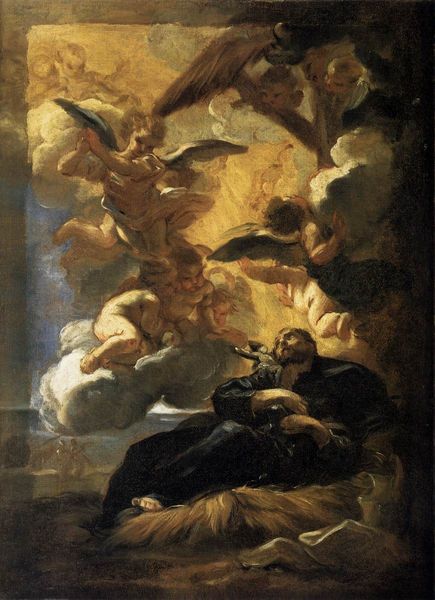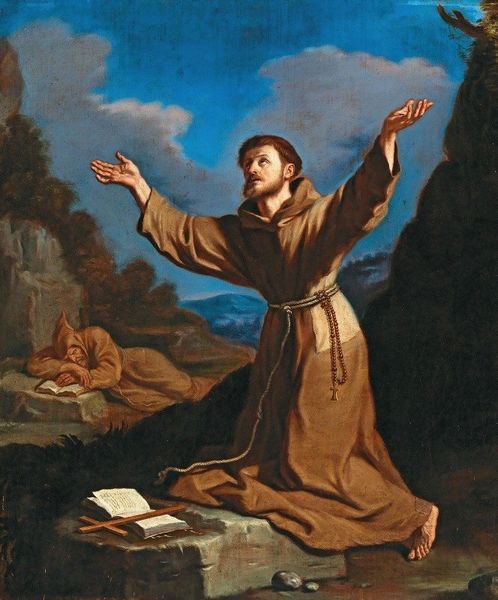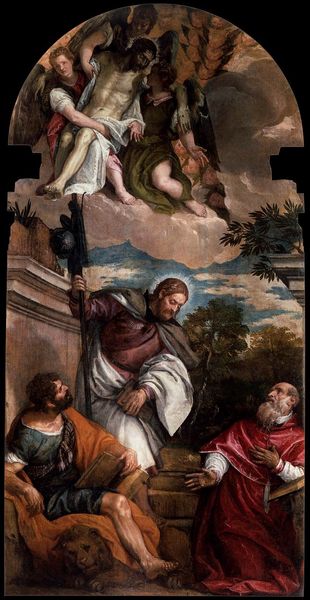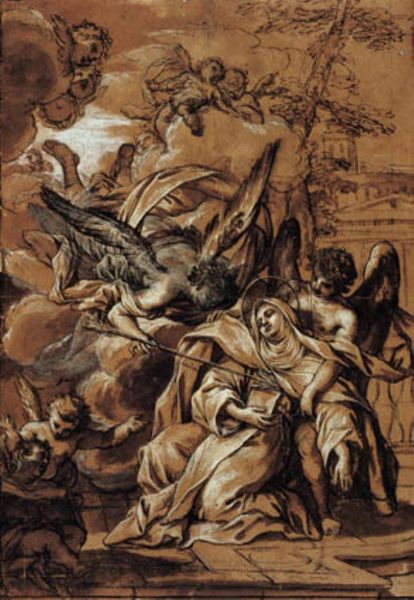
painting, oil-paint
#
venetian-painting
#
painting
#
oil-paint
#
landscape
#
figuration
#
oil painting
#
christianity
#
history-painting
#
italian-renaissance
#
christ
Dimensions: 437 x 259 cm
Copyright: Public domain
Editor: Here we have Paolo Veronese's oil painting, "St. Francis in Ecstasy," from 1582. I’m struck by how the landscape seems to participate in St. Francis’s emotional experience, especially with that dramatic, almost ominous sky. What stands out to you in this piece? Curator: It’s fascinating how Veronese uses light and darkness to evoke an altered state, isn't it? The ecstatic vision is communicated not only through Francis's expression, but by the rays piercing through the turbulent sky. These rays are visually linked to St. Francis via those subtle red lines on his hands. How do those lines and rays interact? What memories or meanings do they conjure? Editor: Well, knowing St. Francis, those have to be the stigmata – the wounds of Christ appearing on his body! They're a direct, physical sign of his connection to Christ. So the beams of light seem to visually confirm his union with God, wouldn't you agree? Curator: Precisely. Notice how this event takes place within the natural world; Veronese isn’t just depicting a divine moment but grounding it in a specific place. What does it tell us about the Franciscan understanding of the relationship between humans, nature, and the divine? Editor: It suggests that the divine isn't separate from nature but infused within it. And maybe it shows that enlightenment, or connection with the divine, is something to be found through contemplation and a return to nature? Curator: Beautifully put! So much meaning resides in how the artist connects these symbols and stories from the past. It shows a continuity between lived human experience and the realm of faith. Editor: This has really made me think about how art can use familiar symbols to express powerful spiritual experiences. Curator: Indeed. Veronese shows how images, like cultural memories, bridge the seen and unseen.
Comments
No comments
Be the first to comment and join the conversation on the ultimate creative platform.
